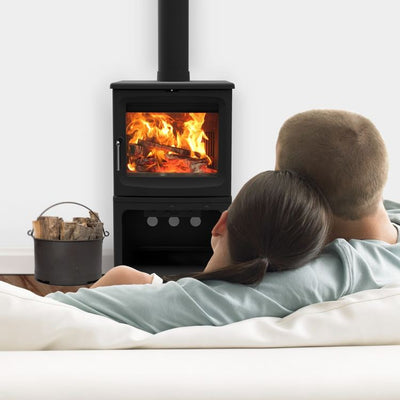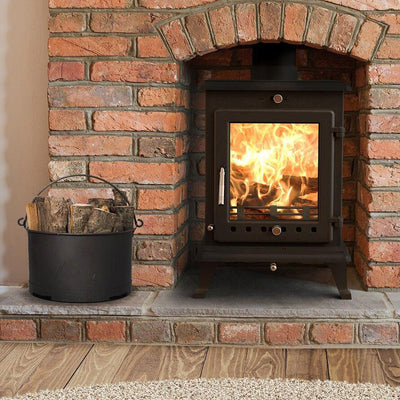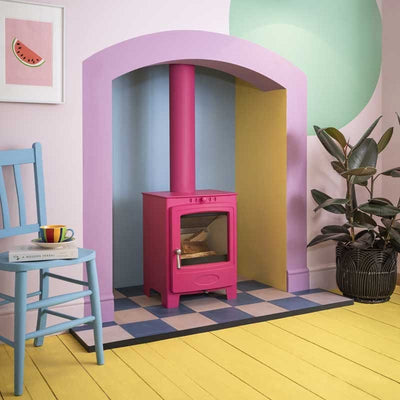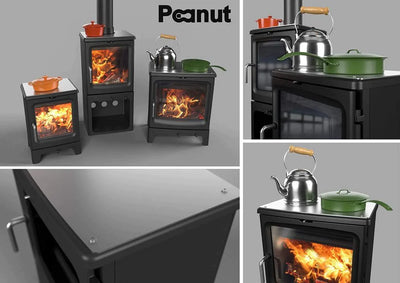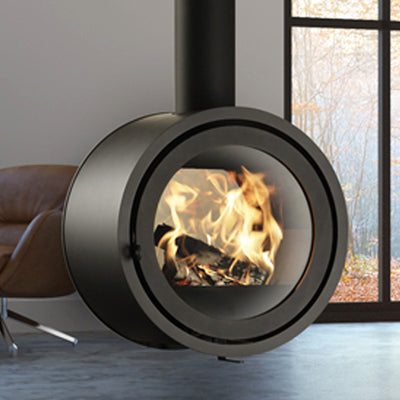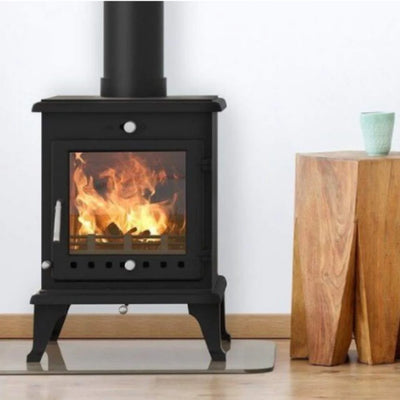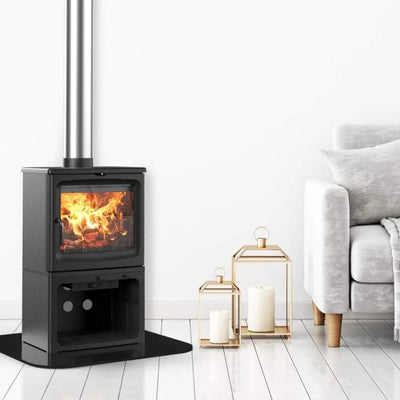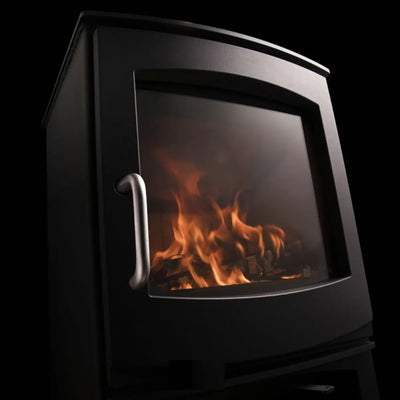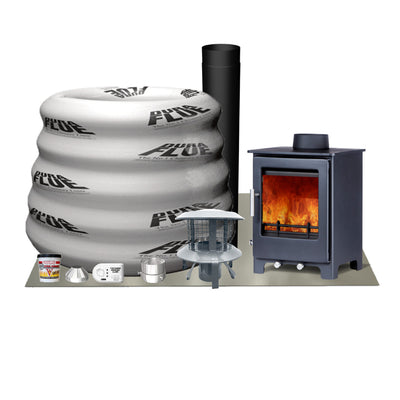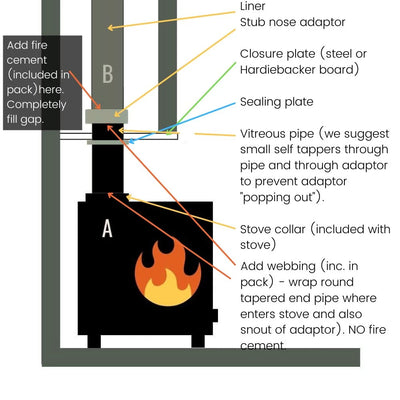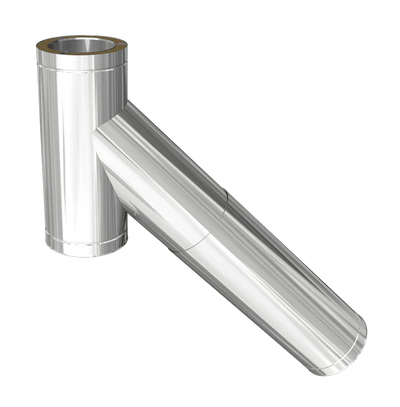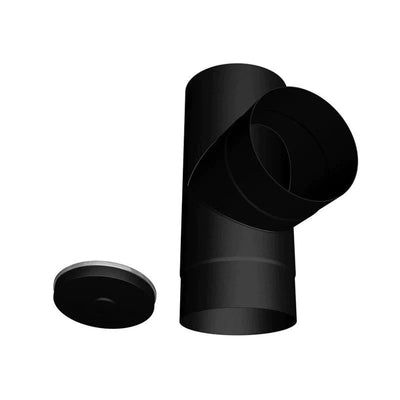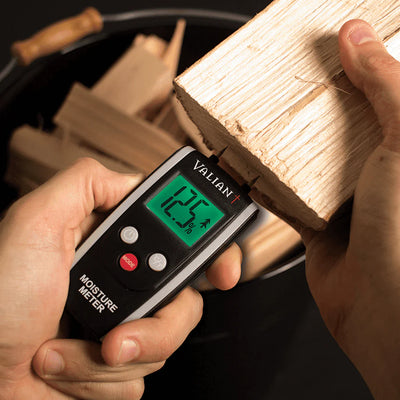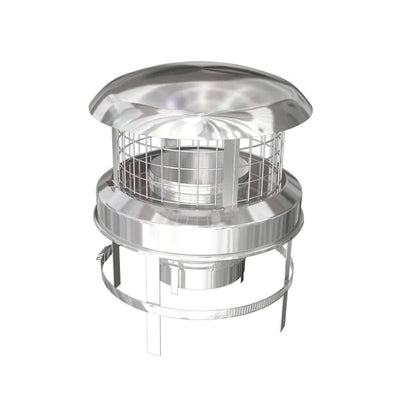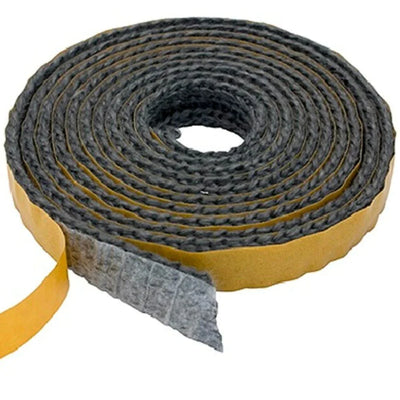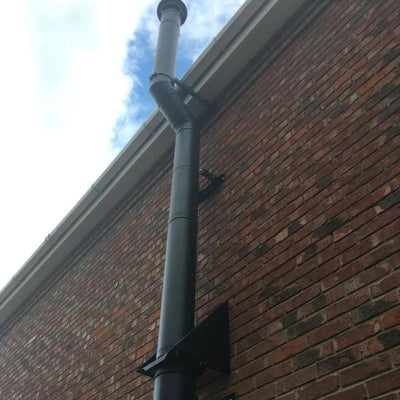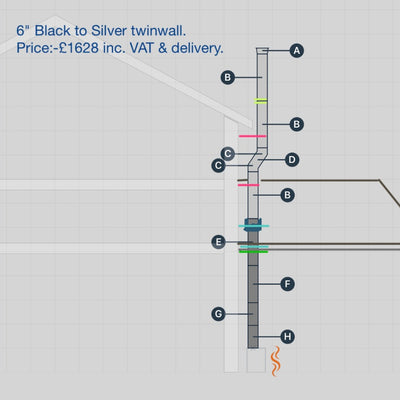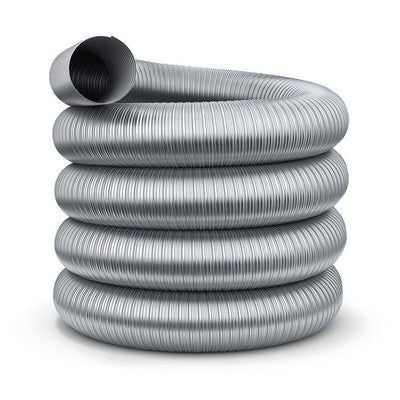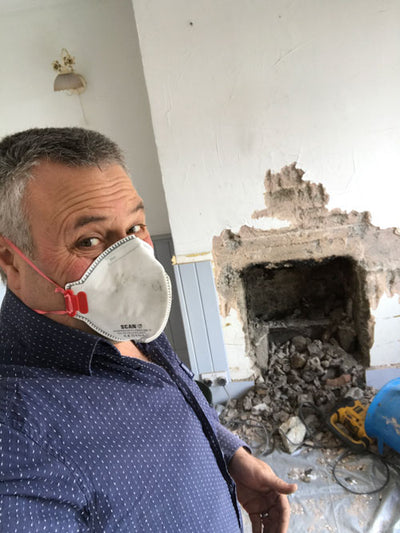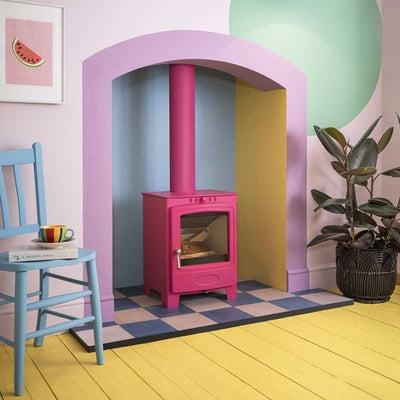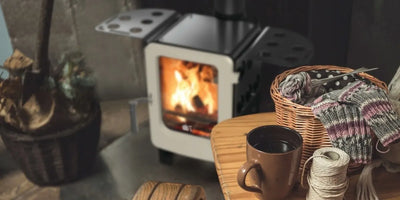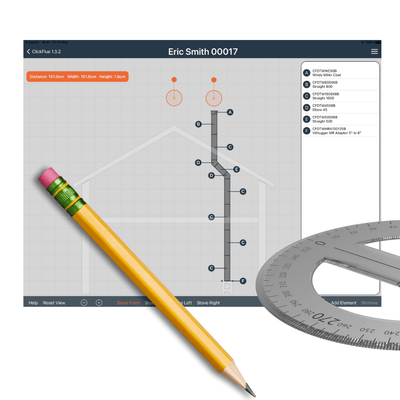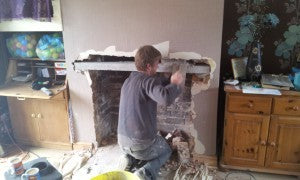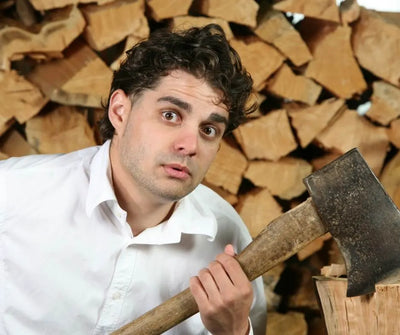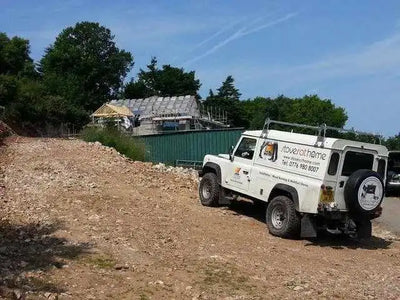Fit your own wood burning stove and save £££'s
5 mins
Fit your own wood burning stove and save £££'s
Julian Patrick, blogger and author of The Stovefitter's Manual hates paying for gas and often manages to heat his home for free.


A perfect storm
During the pandemic families were at home for long periods and energy usage increased. Many people were forced to work from home and spare rooms, sheds and garages around the country were converted into home-offices. These rooms all needed heating and sales of the very latest Ecodesign wood burners boomed.
During 2021 and 2022 sales continue to climb and the wood burning stove industry has just had its busiest ever summer on record. Retailers are running out of many popular models. This is not surprising, wood burner sales tend to rise alongside energy costs and gas and oil are experiencing record price increases with more to come.
Sales of wood stoves tend to rise with political insecurity (even without energy price rises) and the present events in the Ukraine are an example of this. For sellers of wood burning stoves this is a perfect storm.
So is now the time to get an eco-friendly wood burner in your home? Can you DIY a logburner? What does it cost to run, to buy and install?

Why install a logburner?
My wife and I have a small cottage - open plan downstairs with a couple of bedrooms upstairs. We have gas central heating but never use it. I honestly mean it when I say we never use it. We have a wood burning stove downstairs, a DG Ivar 5 (the finest wood burning stove on the planet as far as I am concerned). We tend to light it in the evenings through Spring, Summer and Autumn with sporadic lightings at the weekend should we need it. We buy logs (30 bags at a time, each bag about the size of a small travel cabin bag). But I prefer to use these as a last resort. I like to scavenge for free wood.
This morning on my daily dog walk I found free wood within 100 metres of my home. In two places.
The first find was on somebody's drive. Builder's throwing out a load of wood. I shall be back later in the day to ask if I can take it away for them - rarely is this offer not accepted unless they also have a wood burner of course. The pile of wood on the right is enough to last me a week or two and this sort of wood can go straight onto the stove with no seasoning required. Free wood is everywhere - you just have to be on the lookout.

The second find was a small fallen down tree in the lane by my house. Enough wood for a week or two. No use to me today as I need to slice it up and chuck it in the log store to dry out for next year but it adds to next years free fuel supplies.
What do I use to saw this wood into manageable lengths or logs? A Stihl mini-cordless garden pruner. This is a lovely tool - easy to use and cuts through wood like butter as they say. Get yourself a spare battery though so one can charge whilst you use the other.
You can also use a reciprocating saw. I much prefer the Stihl as the thickness of the cut means much less chance of the saw snagging if the cut becomes pinched.
I actually enjoy chopping up wood with the Stihl - is quick and easy and there are no cables to mess with. Half an hour of work and I have enough wood for 3-4 days.
Pallets are perfect for wood burners as long as they are not heavily treated with chemicals and nowadays most are not. They can also be burned immediately - no seasoning required. Stray pallets can be found all over the place - you'll get good at spotting them. A heavy pallet can keep a wood stove going for at least two evenings.

When it comes to heating the home it is, I admit, easier for me than some. My wife and I have a dog, cat and no kids. If you have a large house with kids in different rooms then you may need to use the central heating whether you like it or not. But a log burner will likely help.
If you are all watching a movie one evening then why not switch the central heating off and just heat the room where the tv lives? Or keep your main living area toasty warm and the rest of the house turn the heating down to a minimum?
I do remember reading that "central heating was the end of the family". A bit extreme maybe but many years ago the whole family would reside in the one room (or freeze). I am not suggesting we go back to this but if you are struggling to heat the whole house maybe there is some merit in creating one warm zone. This could be a life saver for some.

For those in real poverty it is those with wood burning stoves that are the fortunate ones. As long as they can find wood they can stay warm. Many do find wood as well - they are canny and they succeed in their search.
I met a single parent in North Wales who mentioned to a local farmer in the local pub that she was struggling to pay the gas bills. The farmer said to take any branches and fallen trees off his land as "there was loads of it". Her house has been warm ever since. Another person I know has local builders dump their "rubbish" wood on his drive and he saws it up at weekends.
Not so easy for those in towns and cities but you might be amazed at what you can find in skips or at properties where renovation is taking place (remember to ask permission).
It is not just about the potential savings. A wood burner adds ambience to a room and the room comes to life. Once you have lived with a wood stove you will likely always have a wood burner.

A last, and very good reason to install a wood burning stove is as a failsafe. Recent storms showed that power can be cut off for days or even weeks. No heating, no hot water, no cooking. How miserable must that be?
If you have a wood burning stove you have warmth. You can put a pan on the top and boil water. You can heat soup, make porridge, baked potatoes and so much more. The last power cut I experienced we lit a few candles, added a few logs to the stove and cracked open a bottle of Rioja. No drama.
For all the folks who admonished me for missing out a few key issues:
Do not
Do not burn wood with varnish, paint or preservatives on.
Please do not poke a stick in your own eyeballs.

So how much is it going to cost me?
Approx. costs if you have a brick or stone chimney: £750-£1,000 (you can save £500 from this by self-installing).
Approx. costs if you have a chimney but need the fireplace "opening up": £1,600-£2,000 (you can save £1200 from thisby self-installing).
Approx. costs if you do not have a chimney and need a flue: Shed £425-£600. Bungalow £1500. 2-storey house £2500. Save £1,000-£1400 from this by self-installing.
Above figures include labour and materials but no appliance.
We, of course, advise you to purchase your stove and materials from Stovefitter's to ensure quality goods are installed (some installers use budget materials to increase margin).

Can I self-install?
Yes, you can legally self install. Many people fit woodburners and do not obtain the necessary permisons and they are of course very naughty. When I was installing full-time in the hills of North Wales I met a woman who said "All my friends have woodburners and we are the first to get an installer to do it and sign it off".
But, officially, installation of stoves and flue is notifiable and does need signing off by your local council's Building Control Department. With regard to the latter some councils are really helpful and do this all the time, whilst others are a pain.
Do it yourself and get a qualified installer to sign it off at the end? Some will but many will not. What they will usually do is let you do some of the work (e.g. do all the fireplace and hearth work and just leave them the actual stove-install). We advise you to purchase appliances and materials from us to ensure a high-quality product is installed (some installers use budget materials to increase profit margins).
If you are thinking of self-installing your wood burner then you will find our Stovefitter's Manual site very useful, with a wealth of helpful 'How To' articles.
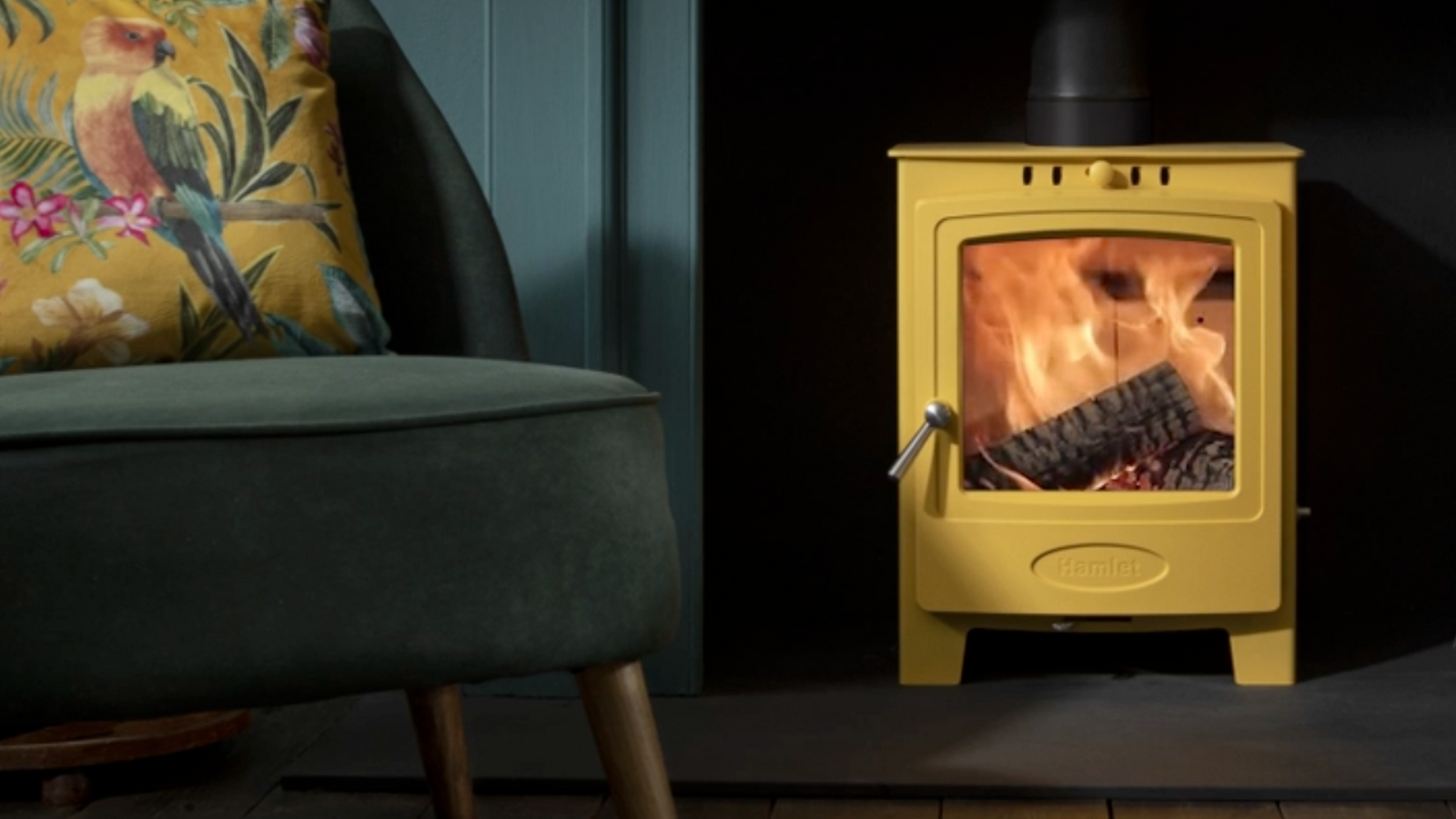
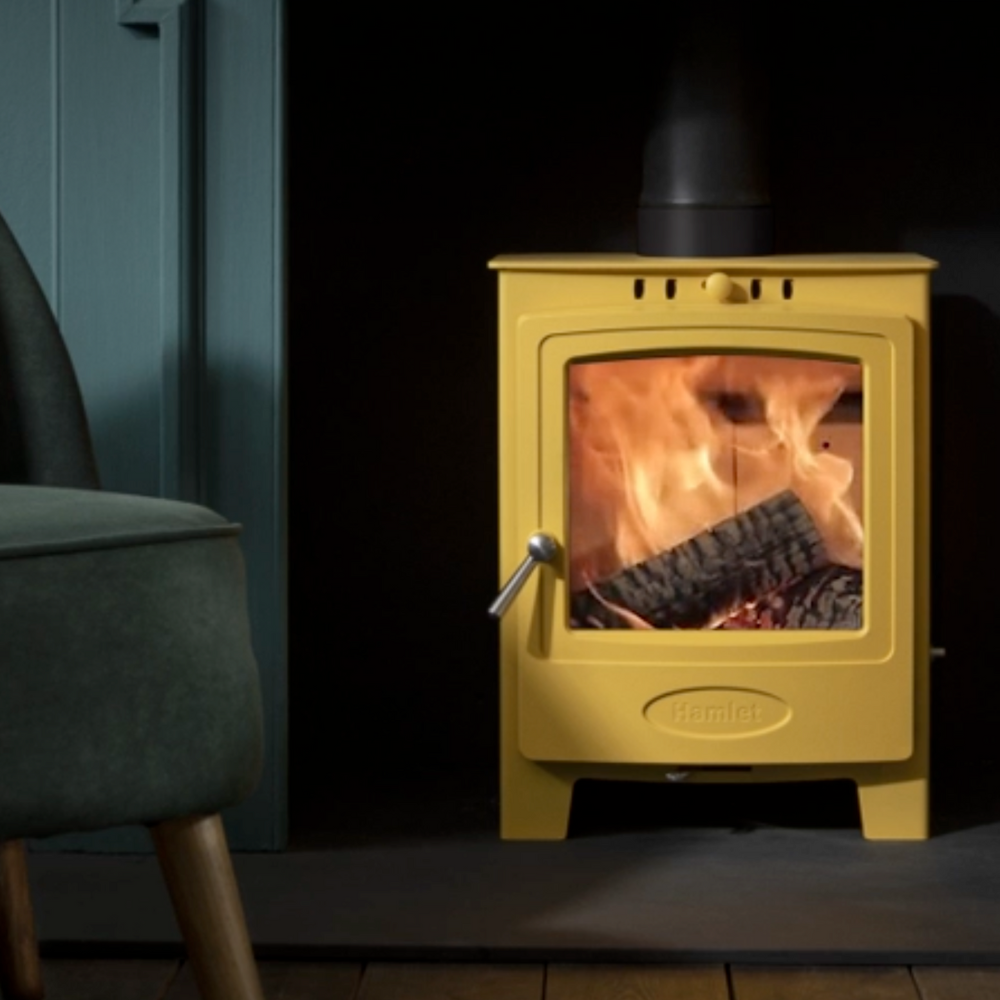
How to choose chimney liner & how much to buy


Installing a stove in a fireplace - what do I need?
FAQs
See all FAQsCosts correct as of April 2023:
Approx. costs if you have a chimney and fireplace ready to use: £750-£1,000 (save £500 by self-installing).
Approx. costs if you have a chimney but need the fireplace "opening up": £1,600-£2,200 (save £1200 by self-installing).
Approx. costs if you do not have a chimney and need a clip-together flue: Shed £475-£700. Bungalow £1500. 2-storey house £2500. Save £1,000-£1400 by self-installing.
Above figures include labour and materials but no appliance.
We, of course, advise you to purchase your stove and materials from Stovefitter's to ensure quality goods are installed (some installers use budget materials to increase margin). If you buy your stove from us (rather than your local small shop or installer) we have a lot more power when approaching manufacturer's with a warranty issue. Why is that? Because we buy many hundreds of stoves a year from these brands.
We do not fit stoves.
But we know a few who do!
Google: Hetas installers
Hetas are the trade body of registered UK installers.
Most installations will require that you slide a chimney liner down your chimney (flexible metal tube 5" or 6" in diameter). Do you have a narrow chimney and want to lessen the risk that a liner might not go down your chimney? Then make sure your chosen stove can use a 5" liner.
Must I line my chimney? Best read this article but most likely the answer is yes. Do I have to fit a chimney liner?
DEFRA-Exempt wood burning stoves with a 5″ collar can usually be fitted to a five inch liner rather than the usual 6″ minimum, making the installer's job much less stressful.
ALL OF THE 5KW STOVES WE SELL CAN BE FITTED TO A 5" CHIMNEY LINER.
I seriously suggest any self installer fits a 5" liner unless they know their chimney is large enough for a 6"!
What is the best chimney liner? Silvacore 904 (we sell it so of course we will say that ;-). What is the best chimney liner?
Useful links
Will your stove require an air vent within the room (some stone walls are very difficult to drill)?
5kW or under and wood burning stoves often do not require an air vent (new builds always require an air vent).
Useful links
What is the maximum output in kW of your "5kW" wood burning stove? The majority of manufacturers just specify the “nominal output” and this figure means very little in real life. The nominal is a figure the manufacturer chooses to sell the stove at - the stove is capable of reaching at least this output with one fuel load. Nominal means "capable of". But it is not the maximum.
Check out the size of the area where the logs will go (firebox size) as this varies enormously. The kW output is completely dependant on the amount of logs burning at any one time - more logs burning equals more heat. If you can fit three logs in stove A and just two logs in stove B then stove A will be capable of throwing out 33% more heat.
DO NOT TRUST MANUFACTURERS’ kW RATINGS as manufacturers specify what output they desire to sell the stove at and testing allows for much “playing with the figures”. This is why you can get very small 5kW stoves (e.g. Aga Little Wenlock) and very large 5kW stoves (e.g. DG Ivar 5 by Dik Geurts which is actually rated 5kW but has a MUCH larger firebox than the Ekol Crystal 5 by Ekol Stoves). A Crystal 5k might get to 5kW and not be capable of any higher whilst a DG Ivar, despite being rated at 5kW, can get to 8kW with a full fuel load.
Note that, over time, one might damage the internal firebricks of a stove by running at a higher load than the manufacturer's suggest. Firebricks are easily replaceable.
Useful links
Will your wood burning stove fit in your recess WITH the required air gaps around it? This is obviously not an issue if your stove will be freestanding.
Air gaps to non-combustible materials (brick, stone etc.) are usually "as close as you like" legally but manufacturers will sometimes specify a recommendation. This recommendation is there to allow heat to escape from the recess into the room - so you get the heat benefit rather than the heat soaking into the building structure and being lost. If no gap to non-combustibles recommended then we suggest 50-100mm air gap left and right of stove, 50mm behind and 100mm above.
Are you in a Smoke Control Area (usually built up areas)?
Choose your stove accordingly.
A stove must be DEFRA-Approved if you wish to burn wood in a smoke control area.
ALL OF THE STOVES WE SELL ARE DEFRA APPROVED FOR SMOKE CONTROL AREAS.
In simple terms if a stove has an efficiency rating of 70% then 30% of the heat from your logs goes up the chimney.
If a stove has an efficiency rating of 90% then only 10% goes up the chimney.
So think of this in terms of how many logs you have to chop/buy.
Example: A Saltfire Peanut 5 by Saltfire Stoves in Dorset has an efficiciency of 80%.
A tall chimney (6m or more) that is lined will be happy with an efficient stove.
Efficiency importance can be said to be overrated and anything between 75% and 85% is fine. Go much higher and performance can actually suffer (smoke in room when opening door to reload, blackening of glass).
Many modern stoves can go on 12mm thick hearths. Others require full, 5″ thick constructional hearths. All of the stoves we sell state whether or not a 12mm hearth is suitable.More about hearths for wood stoves here.
Helpful links
Can you can talk to somebody on the phone should you need to after the wood burning stove has been delivered, especially if you are self installing? Will the staff at “wesellzillionsofstoves.com” be able to assist with any installation issues? What if there are any problems after install?
Do yourself a favour before ordering stoves or materials on the Internet: Go to Trustpilot and type in the company name before you buy. Some companies advertising at the top of search engines are not good news - check for yourself.
When striving to find thebest 5kW wood burning stovesyou will likely be bewildered by the choice. There are many to choose from. The question I get asked most in our shop is “why should I pay <£1,000> for this one when this other one is just <£500>?”. Here is the very simple answer:the cheaper wood stoves are made in Chinaor Eastern Europe whilst the more expensive are made in Western Europe (or sometimes the USA). Here are a few examples where a more expensive stove might excel over a cheaper stove:
- Aesthetics (more time spent on design)
- Hinges (sometimes hidden on more expensive stoves)
- Better quality glass
- Thicker steel (longer life)
- Improved door locking mechanisms
- Longer warranty
- Improved controllabilty of flame due to more resource invested on design of air flow within stove
- Brushed steel fittings instead of cheapy chrome look
Open and close the door on a cheap Chinese stove. Then open and close the door on a DG stove, Arada stoves, Woodford stoves, Hamlet stoves or Saltfire stoves. You’ll understand the difference.
Stove pricing reminds me of wine pricing. A £20 bottle of wine is not double the quality of a £10 bottle of wine (the drinking experience might be improved by 20% as an example). We are talking “the law of diminishing returns here. They are all “fire in a metal box” at the end of the day.
Yes. However, there are specific regulations and restrictions in place to address air pollution concerns, particularly in areas designated as Smoke Control Areas. In these areas, only approved "smokeless" fuels or exempt appliances, such as Defra-approved wood-burning stoves, can be used. These stoves are designed to burn wood more efficiently and produce fewer emissions.
All the stoves we sell are DEFRA approved and Eco-design approved and suitable for all areas of the UK.
Terminology
View all TerminologyA stainless steel tube, slides down a brick/stone chimney to provide a smooth and safe route for smoke.
All of our stoves are approved by DEFRA to burn wood in all UK locations including Smoke Control Areas (towns and cities). Not all stoves are, so be careful if buying elsewhere.
All of our stoves are ECODESIGN approved to be sold in the UK. Not all stoves are, so be careful if buying elsewhere. ECODESIGN is mandatory by law since January 2022.
The base your stove sits on.
If the chimney is the polo mint then the flue is the hole.
More buying guides
View All

How to choose a wood burning stove for your property (includes infographic)
Infographics

What size wood stove do I need? Don't let manufacturers fool you!
Buying Guides
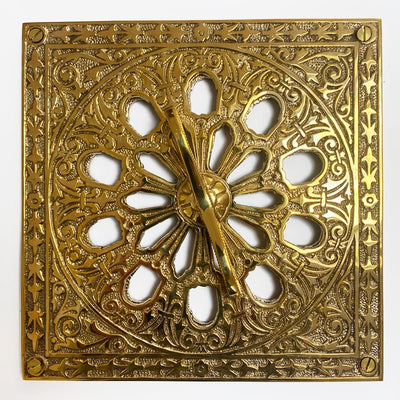
Do I need an air vent for a wood burning stove? If I do not bother?
Buying & DIY

Knowledge Tree: Process of buying and installing a wood burning stove
Buying & DIY
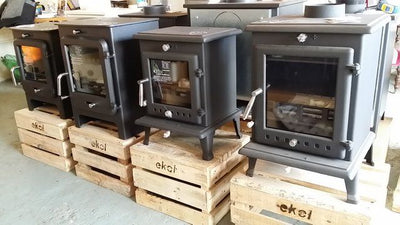
Chinese wood burners – should I buy one or are they all crap?
Buying Guides

What else do I need to buy to install a wood burning stove?
DIY Guides

Infographics for wood burning stove purchase and install
Infographics
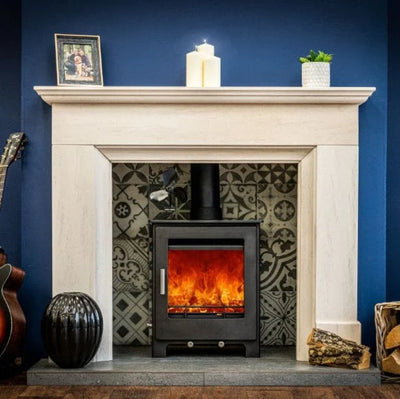
Wood burning or multifuel stove? A stove fitter decides.
Buying Guides
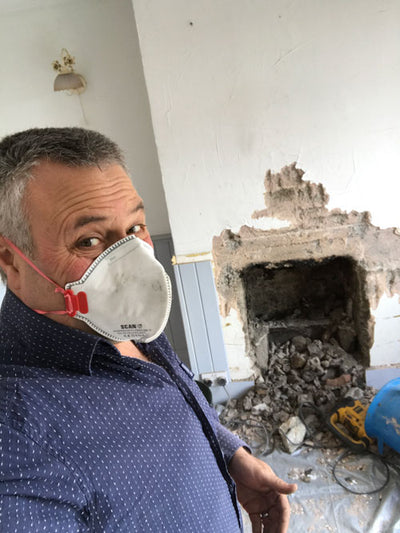
A few words from Julian
Buying & DIY
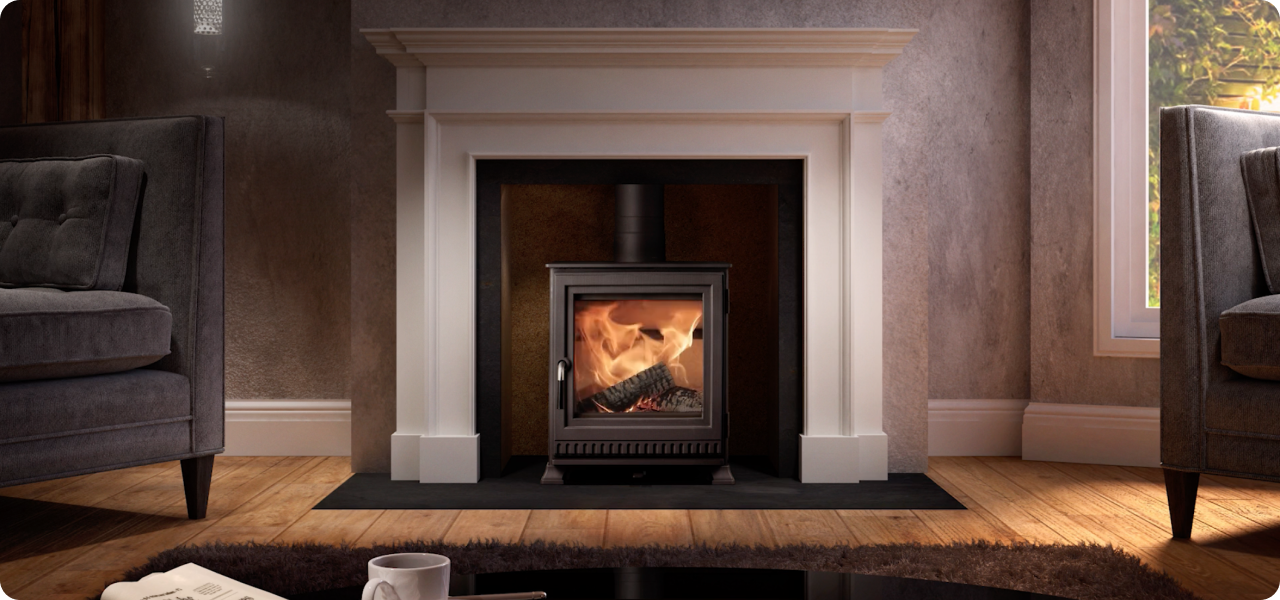
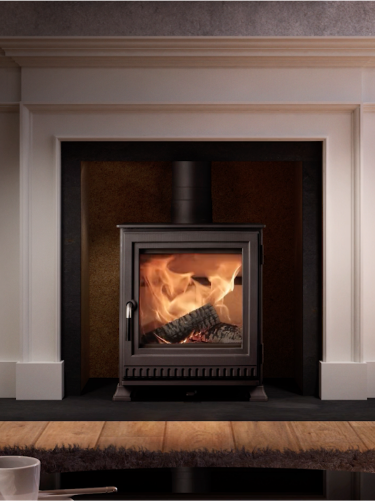
Find my perfect stove
Answer 3 simple questions and we will show you the best Stoves for your space.

